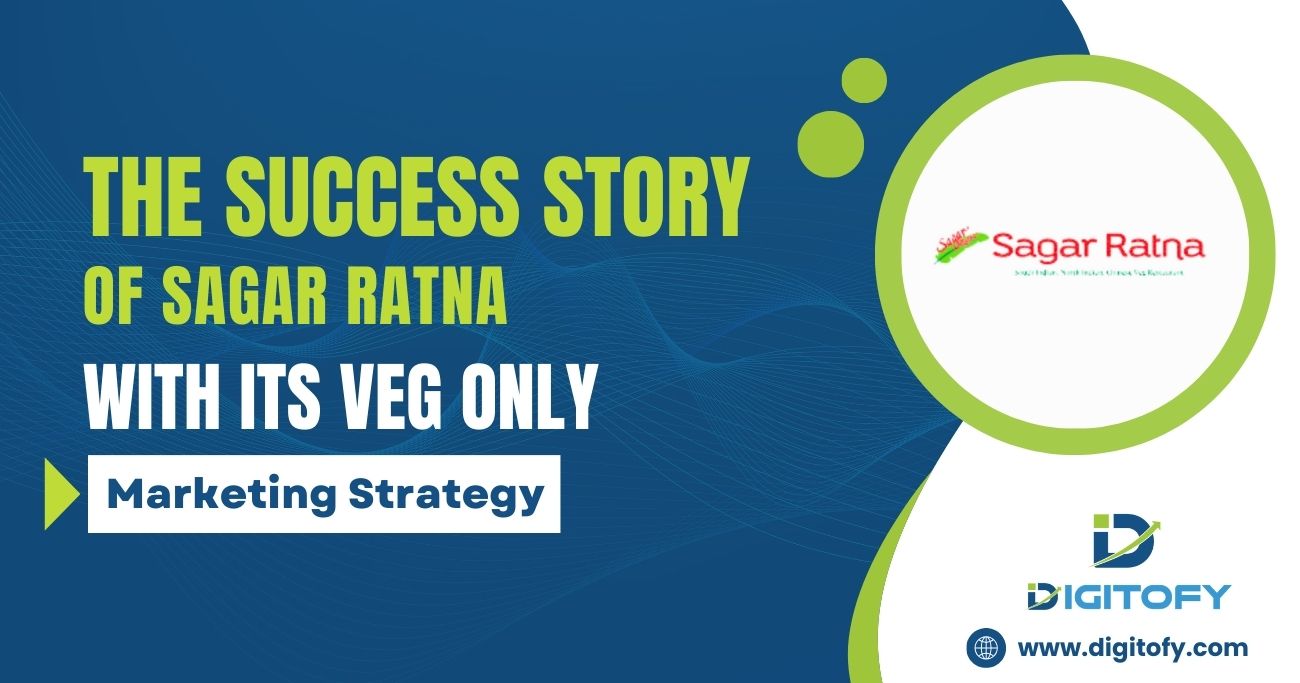The Success Story of Sagar Ratna With Its Veg Only Marketing Strategy
Sagar Ratna has carved out a unique niche for itself in the Indian restaurant space with its creative marketing and laser focus on vegetarian customers. As an established chain with years of success already under its belt, Sagar Ratna provides an insightful case study into how to develop an effective marketing strategy.
About Sagar Ratna
Founded in 1986, Sagar Ratna is now one of India’s most successful restaurant chains featuring all-vegetarian menus that take inspiration from Northern and Southern Indian cuisine. With nearly 50 locations across the country, Sagar Ratna has won over customers with affordable prices and consistently delicious food.
What’s New at Sagar Ratna
Even after two decades, Sagar Ratna continues to innovate, recently revamping menus to add more regional variety and rotate seasonal specials. They also upgrade locations to ensure a high-quality dining experience for patrons. Sagar Ratna stays ahead of trends while still remaining true to its core mission of serving fresh, tasty vegetarian meals.
Also read : How DS Group Made History by Selling 100 Crore Pulse Candies in 8 Months
Getting to Know Sagar Ratna’s Customers
Sagar Ratna locates its restaurants in urban centers and caters primarily to middle and upper-middle-class Indian families, particularly those who maintain vegetarian diets due to religious beliefs or personal preferences. The typical customer values convenience, consistency, and reasonable prices when dining out.
Crafting the Right Mix
Sagar Ratna employs several smart marketing strategies to entice its clearly defined demographic. Let’s break down the key components:
Product
By exclusively providing vegetarian fare with broad appeal that is affordably priced, Sagar Ratna products are well-positioned to satisfy the target audience. The menu features both North Indian and South Indian cuisine, allowing it to cast a wide net for vegetarian customers across regions and cultures.
Bestsellers like paneer tikka masala, gobi manchurian, Mysore masala dosa, and a variety of Indian-Chinese dishes have wide applicability while still retaining authentic flavor profiles. The portions are generous, allowing patrons to feel they are getting excellent value for their money.
While the focus remains resolutely vegetarian, the menu periodically gets updated to keep up with food trends. Seasonal and limited-time offers like new chaat options, innovative desserts, and specialty drinks keep the menu dynamic enough to warrant return visits. Chef collaborations also introduce unexpected flavors, like the recent partnership with famed chef Sanjeev Kapoor to bring some of his signature dishes to the menu.
Pricing
Keeping prices affordable is key to Sagar Ratna’s pricing approach, especially compared to other chains located in affluent neighborhoods and commercial areas. The average meal costs between 300-500 rupees per person including appetizers, mains, breads, rice, and dessert.
This positions it well below most mid-scale and fine-dining Indian competitors in terms of per-person checks. Abundant combo meals, group family-style platters such as thalers, daily lunch specials, and all-you-can-eat weekend brunches provide further value. Higher margin items like beverages and more premium menu additions allow for profitability even while keeping staples modestly priced.
Weekend discounts, customer loyalty programs, and seasonal promotional pricing offer regular patrons even more opportunities to dine on a budget, driving customer loyalty in the process through special treatment. Coupons during major holidays also remain a staple.
Placement
In a strategic move, Sagar Ratna predominantly focuses expansion efforts on well-trafficked areas in Tier I and Tier II cities, especially targeting neighborhoods and districts filled with affluent middle-class customers that are their bread and butter clientele.
Opening outlets close to corporate parks gives them a captive audience for weekday lunches and dinners, while tourist-heavy locales and transportation junctions help make Sagar Ratna a convenient option for travelers looking for satisfying and familiar vegetarian meals. Mall locations also raise the visibility of the brand and provide hassle-free parking.
Even while inhabiting pricey neighborhoods in cities, Sagar Ratna positions itself clearly as an affordable chain through interior aesthetics and consistent branding across locations. The relaxed, cafeteria-style setting suggests value over luxury. Strategic eatery placement deploys the old retail mantra- location, location, location.
Promotions
From consistent branding prominently highlighting its all-veg credentials to targeted advertising and active social media engagement, promotions keep Sagar Ratna top-of-mind, especially around new menu launches, holiday weekends, or customer appreciation events.
For instance, during major festivals like Navratri or Diwali known for feasting, Sagar Ratna rolls out special thalis or upgrades dessert menus, backing them up with print and digital campaigns to capture a share of spending budgets.
By sponsoring cultural events like music concerts or food festivals that draw their target demographic, Sagar Ratna also nets goodwill. Email newsletters, SMS text promos aimed at regulars, and partnerships with complementary brands further bolster retention within its customer base.
Also read : Power of Influencer Marketing: How Country Delight Struck Gold
Analyzing the Competition
Sagar Ratna faces competition primarily from other vegetarian restaurant chains. For example, Rajdhani provides steep competition with its high-end vegetarian thali format showcasing Gujarati cuisine. Giving Rajdhani a run for its money on the pan-India food theme is Sagar Ratna’s diverse North-to-South Indian offerings.
Meanwhile, chains like Bikanervala and Haldiram have created a niche with quick-service vegetarian snacks and street foods. Yet the consistency and quality control Sagar Ratna demonstrates across almost 50 locations solidifies confidence in the brand versus smaller regional players.
The homegrown South Indian vegetarian chain Saravana Bhavan is another formidable competitor especially in the South, although its operations have faced recent controversy. Compared to these category killers, Sagar Ratna holds its own by targeting family-style dining in the North Indian cuisine space while keeping prices reasonable. It wisely steers clear of the high-end pure vegetarian segment occupied by niche chains like Rajdhani.
This laser focus on carving out a unique positioning among India’s vegetarian chains has served Sagar Ratna well over the last two decades. With starving patrons always on the hunt for tasty dependable meals, expanding its geographic footprint wider could unlock even more success.
Also read : Fueling Rapid Growth: Domino’s Clever Marketing Strategy in India
Capturing Success
Key factors powering Sagar Ratna’s thrive:
- Laser targeting vegetarian customers
- Strategic restaurant locales
- Maintaining affordable price points
- Innovating new menu items
- Loyalty programs and promotions
By studiously understanding core customers, keeping prices modest, and relentlessly focusing on food quality, Sagar Ratna enjoys sustained dominance in its niche. Competitors struggle to replicate this winning marketing recipe. With strong word-of-mouth and prime locations securing steady foot traffic, Sagar Ratna looks poised for even more growth and success.
Related Blogs:
FNP or Fern & Petals Marketing Strategy That Made Then over 600 Cr with Over 300 Outlets!
Power of Influencer Marketing: How Country Delight Struck Gold
The Perfect Cup of Chai: Unravelling Chaayos’ Captivating Marketing Strategies
Fueling Rapid Growth: Domino’s Clever Marketing Strategy in India
Disrupting the Hotel Industry: How OYO Rooms Took Marketing by Storm

.webp)

